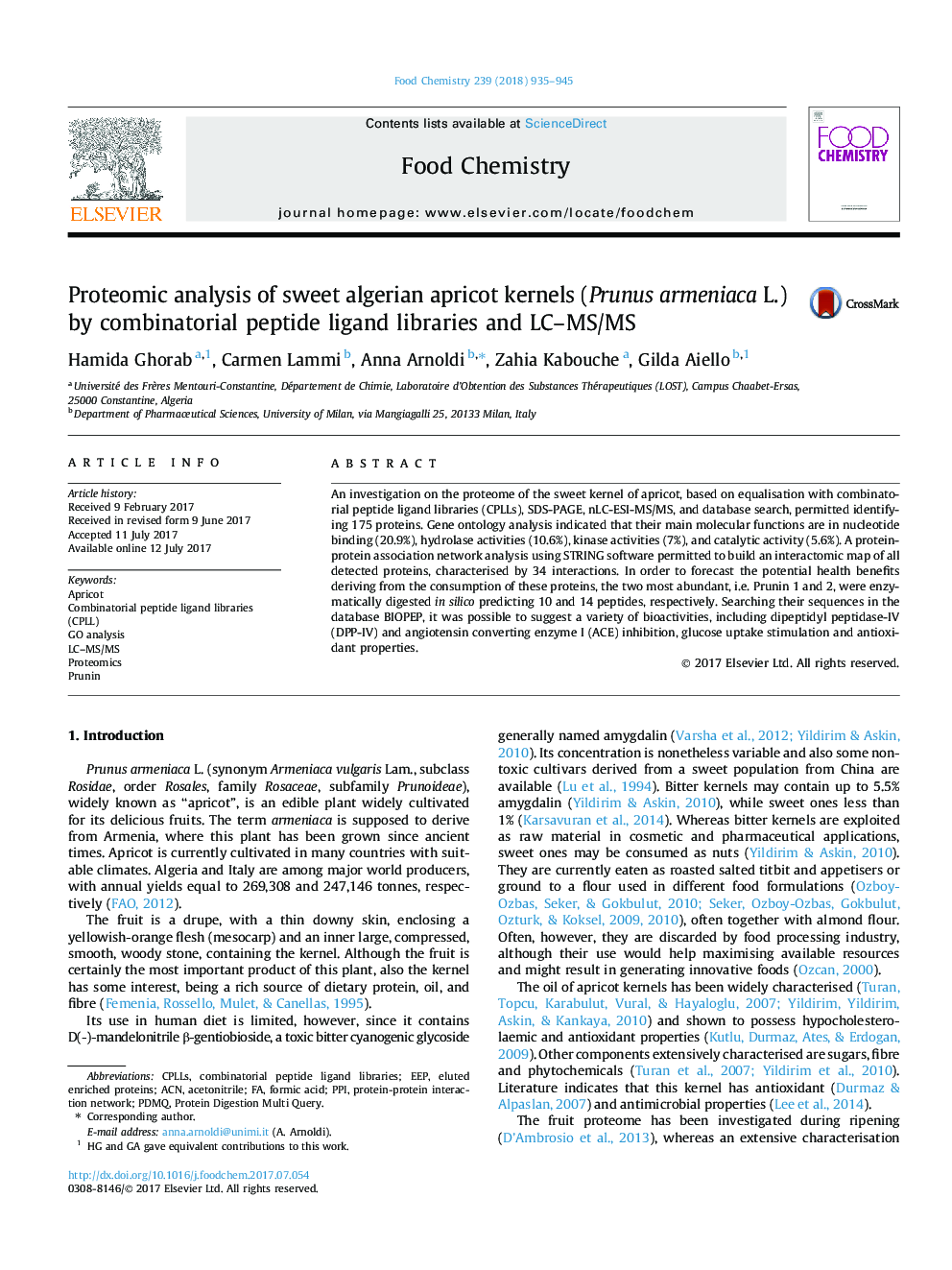| Article ID | Journal | Published Year | Pages | File Type |
|---|---|---|---|---|
| 5133036 | Food Chemistry | 2018 | 11 Pages |
â¢CPLL's, LC-MS and Bioinformatics for apricot kernel proteome and peptide discovery.â¢Low abundance protein identification.â¢In total 175 proteins characterised by searching in Viridiplantae databases.â¢Potentially bioactive peptides encrypted in main storage proteins.
An investigation on the proteome of the sweet kernel of apricot, based on equalisation with combinatorial peptide ligand libraries (CPLLs), SDS-PAGE, nLC-ESI-MS/MS, and database search, permitted identifying 175 proteins. Gene ontology analysis indicated that their main molecular functions are in nucleotide binding (20.9%), hydrolase activities (10.6%), kinase activities (7%), and catalytic activity (5.6%). A protein-protein association network analysis using STRING software permitted to build an interactomic map of all detected proteins, characterised by 34 interactions. In order to forecast the potential health benefits deriving from the consumption of these proteins, the two most abundant, i.e. Prunin 1 and 2, were enzymatically digested in silico predicting 10 and 14 peptides, respectively. Searching their sequences in the database BIOPEP, it was possible to suggest a variety of bioactivities, including dipeptidyl peptidase-IV (DPP-IV) and angiotensin converting enzyme I (ACE) inhibition, glucose uptake stimulation and antioxidant properties.
